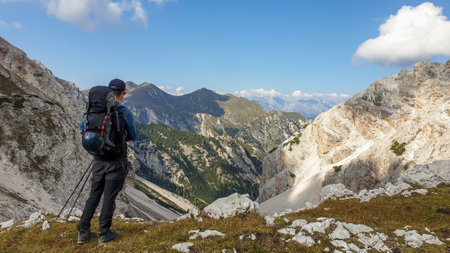1. Introduction to American Hiking Clubs
Hiking has always held a special place in American culture, offering not just a way to enjoy breathtaking natural landscapes, but also an opportunity to build community and promote outdoor stewardship. Across the United States, hiking clubs have been central to this experience. These groups bring together people of all ages and backgrounds who share a love for the outdoors and a commitment to protecting it.
The Role of Hiking Clubs in American Communities
American hiking clubs play a big part in local communities. They organize group hikes, maintain trails, teach outdoor skills, and encourage responsible recreation. Many clubs also serve as social hubs, helping new hikers make friends and find mentors. Whether you’re in a small town or a big city, there’s a good chance that a hiking club is nearby, working to connect people with nature.
How Hiking Clubs Have Evolved
The first hiking clubs in the U.S. started more than a century ago. Back then, their main goal was simply to explore wild places and make them accessible for others. Over time, these clubs grew in size and purpose. Today’s hiking organizations focus on everything from trail preservation to climate action, reflecting America’s changing relationship with the environment.
Overview of Major Hiking Clubs
| Club Name | Founded | Main Activities | Region |
|---|---|---|---|
| Appalachian Mountain Club (AMC) | 1876 | Trail maintenance, conservation advocacy, group hikes | Northeast US |
| Sierra Club | 1892 | Outdoor trips, environmental campaigns, education | Nationwide |
| The Mountaineers | 1906 | Climbing courses, stewardship projects, youth programs | Pacific Northwest |
| Colorado Mountain Club (CMC) | 1912 | Hiking outings, environmental stewardship, training | Rocky Mountains |
| Florida Trail Association (FTA) | 1964 | Trail building, conservation, guided hikes | Southeast US |
This overview shows how deeply woven hiking clubs are into the fabric of American outdoor life. As we look closer at their work, it becomes clear how these groups champion environmental conservation while shaping America’s outdoor culture.
Trail Stewardship and Habitat Restoration
American hiking clubs play a vital role in protecting the nation’s wild places by taking hands-on action through trail stewardship and habitat restoration. These groups don’t just enjoy the outdoors—they roll up their sleeves to care for it, organizing regular activities that help maintain the beauty and health of America’s landscapes.
Trail Maintenance
Maintaining trails is at the heart of what many hiking clubs do. Volunteers gather to clear fallen branches, repair eroded paths, build footbridges, and install signage. By keeping trails safe and accessible, they help prevent hikers from creating new, damaging shortcuts that can hurt fragile habitats.
| Activity | Purpose | Typical Tools Used |
|---|---|---|
| Clearing debris | Keeps trails open and safe | Loppers, saws, rakes |
| Repairing erosion | Prevents damage to landscape | Shovels, pickaxes, gravel |
| Building structures | Protects sensitive areas (streams, slopes) | Lumber, hammers, nails |
| Installing signs | Guides hikers and educates about conservation | Posts, drills, markers |
Invasive Species Removal
Many American landscapes are threatened by invasive plants that crowd out native species. Hiking clubs often organize “weed pulls” or invasive species removal days where members identify and remove these harmful plants. This work gives native flora a chance to thrive and helps restore balance to the ecosystem.
Common Invasive Species Targeted by Clubs:
- Garlic mustard (Eastern forests)
- Tamarisk (Southwest riversides)
- Kudzu (Southeast woodlands)
- Scotch broom (Pacific Northwest)
Habitat Restoration Projects
Beyond trail work, many hiking organizations launch projects to revive natural habitats. This may include planting native trees, restoring wetlands, or building bird nesting boxes. These efforts support wildlife and strengthen the natural resilience of parks and forests for future generations.
How Hiking Clubs Make an Impact:
- Community Events: Organizing public volunteer days to get more people involved in conservation work.
- Youth Programs: Teaching kids about nature through hands-on restoration projects.
- Partnerships: Working with park rangers and local governments for bigger restoration goals.
This practical stewardship ensures that America’s trails and wild spaces remain healthy and beautiful for everyone to explore.

3. Education and Outreach Initiatives
American hiking clubs know that protecting the outdoors starts with education. These organizations work hard to teach both their members and the public about important environmental principles, especially Leave No Trace (LNT), responsible recreation, and outdoor ethics. Their goal is to inspire hikers of all ages to enjoy nature while keeping it healthy for future generations.
Leave No Trace Principles
The Leave No Trace program is a big deal in American hiking culture. Most hiking clubs offer workshops, handouts, and guided hikes focused on these seven core principles:
| LNT Principle | What It Means |
|---|---|
| Plan Ahead and Prepare | Know your route, pack smart, and be ready for weather or emergencies. |
| Travel and Camp on Durable Surfaces | Stick to established trails and campsites to avoid damaging plants. |
| Dispose of Waste Properly | Pack out trash, leftover food, and even pet waste. |
| Leave What You Find | Don’t pick flowers or take rocks—let others enjoy them too. |
| Minimize Campfire Impact | If fires are allowed, keep them small and use existing fire rings. |
| Respect Wildlife | Observe animals from a distance; don’t feed or disturb them. |
| Be Considerate of Other Visitors | Keep noise down and yield the trail when necessary. |
Public Outreach Programs
Hiking clubs go beyond their own membership. Many run outreach programs at local schools, libraries, or community centers. Volunteers lead nature walks for beginners, organize family-friendly clean-up days, and set up booths at local fairs to share tips on responsible hiking. These efforts help spread environmental awareness in communities large and small across the U.S.
Popular Outreach Activities by Hiking Clubs:
- Youth Education: Special programs for scouts or school kids that mix outdoor fun with eco-lessons.
- Workshops & Seminars: Free talks about topics like native plants or how to hike safely during wildfire season.
- Trail Days: Hands-on events where people learn about trail maintenance and conservation while working outside together.
- LNT Ambassadors: Club members trained to answer questions on trails and share LNT tips with fellow hikers.
The Power of Shared Values
By teaching good habits and sharing their love of nature, American hiking clubs are building a culture of respect for the environment. Every educational event helps create new advocates for conservation—one hiker at a time.
4. Advocacy for Conservation Policies
American hiking clubs play a huge role in environmental conservation by actively advocating for policies that protect natural spaces. These groups aren’t just about enjoying the outdoors—they’re also about making sure those wild places are preserved for generations to come. Here’s how hiking clubs get involved in grassroots advocacy, partner with government agencies, and influence policy decisions to safeguard America’s wilderness.
The Power of Grassroots Advocacy
Hiking clubs often mobilize their members to speak up for the environment. Through letter-writing campaigns, public comment periods, and community meetings, club members make their voices heard on issues like protecting local trails from development or supporting new wilderness designations. Their efforts can rally entire communities around conservation causes.
Key Ways Hiking Clubs Advocate Locally
| Advocacy Activity | Description |
|---|---|
| Public Comment Campaigns | Members submit opinions during government proposal periods |
| Community Meetings | Organize or attend meetings to discuss conservation priorities |
| Petition Drives | Gather signatures to show broad support for protection measures |
| Educational Events | Host workshops or talks to inform the public about threats to wild areas |
Partnering with Government Agencies
Many hiking clubs work directly with agencies like the U.S. Forest Service, National Park Service, and Bureau of Land Management. These partnerships help ensure that hikers’ perspectives are considered when decisions are made about land use and trail maintenance. Sometimes, club leaders even serve on advisory boards or committees that shape local conservation plans.
Examples of Government Collaboration
- Participating in volunteer trail stewardship programs organized by federal or state agencies.
- Offering feedback on proposed changes to trail systems or park management rules.
- Helping with scientific surveys or citizen science projects that inform conservation strategies.
Influencing Policy for Wilderness Protection
Beyond local action, American hiking clubs often advocate at the state and national levels for laws that protect public lands. They might join coalitions with other outdoor groups, meet with lawmakers, or testify at legislative hearings. Over time, this persistent advocacy has led to real results—such as creating new wilderness areas, defending existing parks from budget cuts, or stopping harmful development projects before they start.
How Hiking Clubs Impact Policy Decisions
| Policy Area | Club Actions |
|---|---|
| Wilderness Designation | Lobby Congress, submit testimony, build public support |
| Parks Funding | Rally members to contact officials about funding needs |
| Sustainable Trail Access | Advocate for balanced recreation and habitat protection rules |
| Lands Conservation Bills | Form alliances with other organizations to amplify impact |
This hands-on approach makes hiking clubs some of the most effective advocates for America’s wild places—ensuring that everyone can continue to enjoy unspoiled nature both now and in the future.
5. Building Inclusive and Sustainable Communities
Encouraging Diverse Participation
American hiking clubs know that the outdoors should be for everyone, not just a select few. Many clubs have started outreach programs to welcome people from different backgrounds, ages, and abilities. They host beginner hikes, family-friendly events, and specialized outings for groups like veterans or people with disabilities. By lowering barriers to entry—such as providing gear loans or transportation—clubs help make hiking more accessible to all.
Examples of Inclusive Initiatives
| Initiative | Description |
|---|---|
| Gear Libraries | Clubs lend backpacks, boots, and other equipment to new hikers who may not have their own. |
| Sliding Scale Membership Fees | Some clubs offer reduced fees based on income so cost is not a barrier. |
| Multilingual Events | Hikes and workshops are offered in Spanish and other languages to reach a wider community. |
| Accessible Trails Programs | Special outings focus on wheelchair-accessible trails and adaptive hiking equipment. |
Fostering a Sense of Stewardship
Hiking clubs do more than organize walks—they teach members how to care for the environment. Clubs run “Leave No Trace” workshops, organize trail cleanups, and partner with local land agencies for habitat restoration projects. These hands-on experiences help members feel responsible for protecting natural spaces. When people see their positive impact firsthand, they’re more likely to become lifelong advocates for conservation.
Common Stewardship Activities
- Trail maintenance days where volunteers repair paths and remove invasive plants
- Litter pickup hikes that combine fun with environmental action
- Citizen science projects like wildlife monitoring or water testing
- Educational talks on native plants, animals, and ecological threats
Creating Lasting Connections Between People and Nature
The friendships built while hiking often lead to stronger communities that care deeply about the outdoors. Many clubs create regular opportunities for social connection—like potlucks after hikes or overnight camping trips—that allow members to bond over shared experiences. This sense of belonging helps people feel invested in both their club and the lands they explore. As these bonds grow, so does the collective commitment to preserving America’s wild places for future generations.


